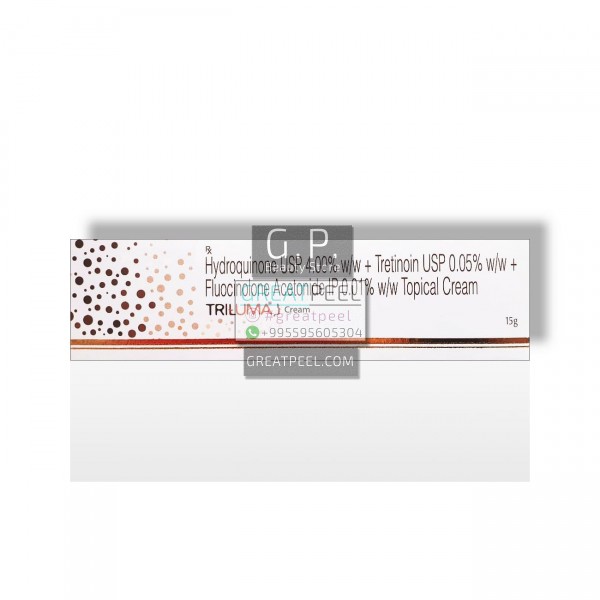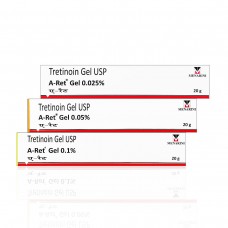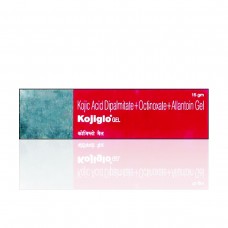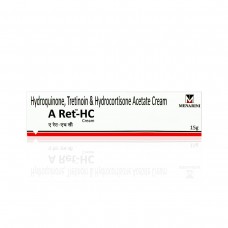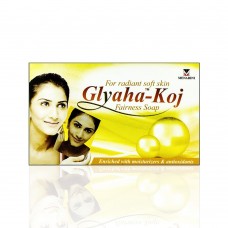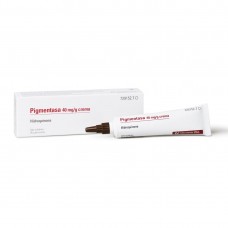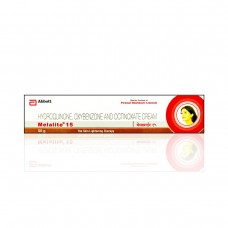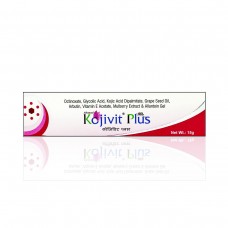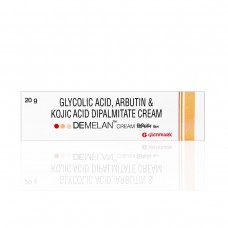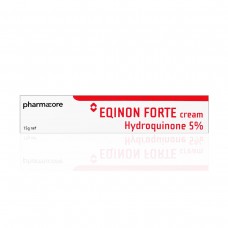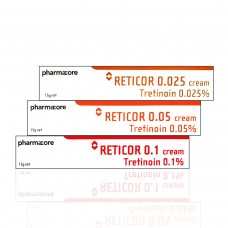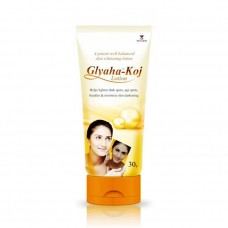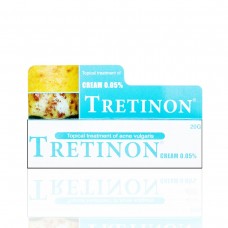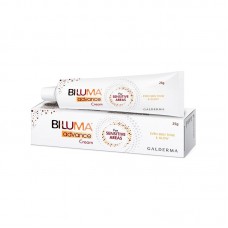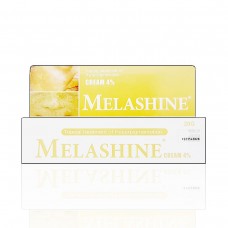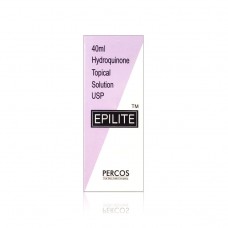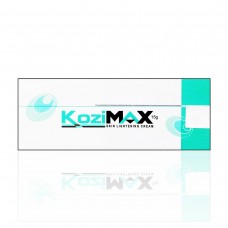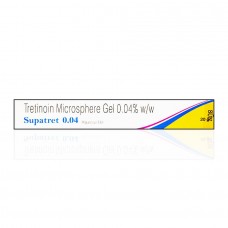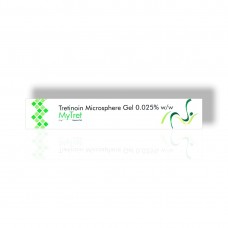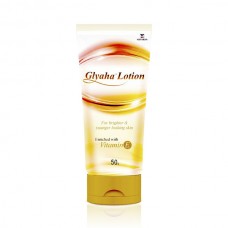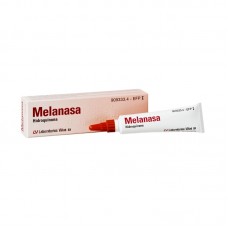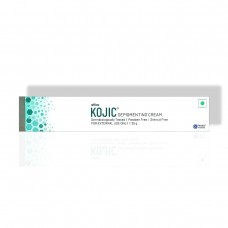Your shopping cart is empty!
TRI-LUMA WITH HYDROQUINONE 4% / TRETINOIN 0.05% / FLUOCINOLONE ACETONIDE 0.01% CREAM | 15g/0.53oz
3 or more $23.65
4 or more $23.15
5 or more $22.75
10 or more $22.35
Properties and indications:
- Tri-Luma ® cream is designed for topical treatment of dark spots, which are associated with melasma;
This is a combination of three complementary active agents:
- depigmenting agent (4% hydroquinone) – blocks the melanin, and evens skin tone;
- derivatives of vitamin A (tretinoin 0.05%) – renews and protects the skin;
- anti-inflammatory component (fluocinolone acetonide 0.01%) – helps to heal the skin, reducing the inflammation.
- provides faster results (6-8 weeks);
- it is the only drug approved by the FDA, with 3 active ingredients;
- manufacturing – India.
The composition and release form:
cream for external use 15g/0.53oz
Active ingredients:
- fluocinolone acetonide – 0.01 % (0.1 mg);
- hydroquinone – 4 % (40 mg);
- tretinoin – 0.05 % (0.5 mg).
Inactive: butylated hydroxytoluene, cetyl alcohol, citric acid, glycerin, glyceryl stearate, magnesium aluminum silicate, methyl gluceth-10, methylparaben, PEG-100 stearate, propylparaben, purified water, sodium metabisulfite, stearic acid, and stearyl alcohol.
Contraindications:
- pregnancy and lactation;
- acute inflammation (including eczema) lesions of the skin (dermatitis, seborrhea, and others.);
- rosacea;
- skin lesions (wounds, burns, etc.);
- photosensitivity;
- diseases of the rectum, of liver or kidney, Addison's disease;
- asthma, allergic to sulfites, or to any of the components of the cream;
- hypersensitivity to any component of the cream (discontinue use and consult a doctor if you have any of these symptoms of an allergic reaction: hives, difficulty breathing, swelling of the face, lips, tongue, or throat).
Side effects of the preparation
In controlled clinical trials, the most frequently reported side effects such as:
- redness;
- peeling;
- burning;
- dryness and itching at the site of application.
Discontinue use and notify your doctor if you have any of the following side effects:
- darkening of the treated skin;
- strong irritation of the skin;
- the formation of bubbles;
- dribbling, scaling or crusting;
- painful burning or swelling of the skin;
- any type of breathing problems;
- irritation of your eyes, nose, or mouth.
Dosage and how to use:
Tri-Luma cream should always be used in accordance with the instructions of your doctor.
In order to properly use it, follow these steps:
- gently wash your face with a mild cleanser;
- apply the cream 1 a day at night, at least 30 minutes before bedtime;
- apply a small amount (the size of a pea or ½ centimeter or less) cream on the tip of your finger;
- apply a thin layer of cream evenly on the pigmented area;
- also, include about 5 mm of normal skin surrounding the affected area and easily rub the cream. The cream should be well absorbed. If you can still see it, then you use it too much;
- is required to wash your hands after;
- avoid using other products on the treated area for at least 1 hour after application;
- if there is dry, apply a moisturizer;
- the result will be seen after 1-4 weeks;
- therapy time is 2-4 months according to the prescription of your doctor;
- the second course is possible only after consultation with your doctor.
Important information:
- avoid products which can dry or irritate the skin, for example, abrasive cleansers, scrubs or peels, alcohol, benzoyl peroxide, soap;
- exposure to solar UV light and heat, wind, and cold should be avoided. If exposure can not be avoided, then the sunscreen (SPF 30 or higher) and protective clothing should always be used. After stopping treatment, you still need to protect your skin from the sun's rays;
- if you burned, stop using the cream as long your skin has healed;
- keep the cream away from your nose, mouth, or eyes. In case of contact, rinse with warm water;
- too much cream can irritate your skin and will not give you faster or better results;
- do not use occlusive dressings;
- you can also use moisturizing and/or cosmetic non-comedogenic products, within a day;
- safety and effectiveness of Tri-Luma has not been studied in people with dark skin (Fitzpatrick skin type V and VI);
- only your doctor can determine whether a treatment with this drug suitable option for you.
F.A.Q.s
What is hydroquinone?
This is an aromatic organic compound, which is initially has been derived from a quinone.
It is used as an ingredient for skin whitening.
Hydroquinone reduces the production of melanin in the skin and is used for skin with hyperpigmentation and melasma, and also as a product of getting rid of freckles and sunspots.
It is important to use sunscreens since hydroquinone reduces the amount of melanin in the skin, and it becomes more sensitive to the sun.
What is tretinoin?
Tretinoin is a natural retinoid, active forms of vitamin A.
It cleans clogged pores, helps stop future breakouts of acne deep into the skin and reduces inflammation.
In the topical treatment, tretinoin should be controlled the intake of vitamin A from other sources, since its excess leads to skin irritation or hypervitaminosis.
What is the most optimal concentration?
In different concentrations, hydroquinone inhibits or prevents the skin from the production of enzymes responsible for the action of melanin, the main pigment that gives skin its color (Source: Journal of Drugs in Dermatology, March 2010, pages 215-218).
Without prescription hydroquinone in products may contain a concentration from 0.5% to 2%.
2% concentration is the most effective.
At the pharmacy, 4% (or more) the concentration of hydroquinone, available only by prescription.
A concentration of 12% hydroquinone actually prevents the production of melanin altogether.
I heard about a variety of possible negative side effects of using hydroquinone. Is it really so?
To consumers provided exaggerated information about the possible negative side effects of using products containing hydroquinone.
A closer look and research shows that adverse skin reactions are rare and most often minor.
The greatest danger is a skin disease called ochronosis, which is a bluing discoloration of the skin.
Although that this is a really terrible disease, it is important to keep in mind the fact that over the past 50 years has been used millions of liters of hydroquinone in the products, but among them was found only a few cases with diagnosis ochronosis, that was directly associated to using hydroquinone.
Moreover, these cases have been a result of long term use of high concentrations, or of using hydroquinone products that have been adulterated with dangerous ingredients (Sources: Journal of the European Academy of Dermatology and Venereology, July 2009, pages 741-750; and Journal of the American Academy of Dermatology, November 2007, pages 854-872).
Why has hydroquinone been banned by European Union countries?
Hydroquinone-based products were banned in South Africa years ago was the most severe problems that occurred.
However, hydroquinone products in South Africa and other African countries were found to also contain mercury and glucocorticoids, among other caustic and illegal contaminants, which is believed by many to be the cause of the serious side effects seen (Sources: International Journal of Dermatology, February 2005, pages 112–115; and British Journal of Dermatology, March 2003, pages 493–500).
Countries that are part of the European Union have banned hydroquinone chiefly on the basis of these reports.
This ban is frustrating to many because when properly formulated, hydroquinone is not a harmful ingredient and there's no substantiated research proving otherwise.
Is hydroquinone carcinogenic?
This question was considered in the research.
It was proved problematic cases when hydroquinone fed or was injected into rats at high doses.
But in a topical application has not been researched to prove that this substance to be mutagenic on humans or animals.
In fact, there is abundant research showing that hydroquinone is safe and highly effective (Sources: Cutis, April 2008, pages 356–371 and August 2006, pages S6–S19; Critical Reviews in Toxicology, November 2007, pages 887–914; Journal of Cosmetic Laser Therapy, September 2006, pages 121–127; American Journal of Clinical Dermatology, July 2006, pages 223–230; and Journal of the American Academy of Dermatology, May 2006, pages S272–S281).
Interesting fact – there is a study where it was proved that hydroquinone has strong antioxidant properties and the people who use qualitative hydroquinone actually have lower incidents of cancer than the population as a whole (Sources: Free Radical Research, April 2010, pages 473-478; Journal of Natural Products, November 2002, pages 1,605–1,611; and Critical Reviews in Toxicology, May 1999, pages 283–330).
Does it matter whether where keep the products with hydroquinone?
Hydroquinone quickly lose its natural properties under the influence of oxygen and sunlight.
Therefore, it is important to ensure that it is packaged in a nontransparent container.
Also, it should be stored in a place where no light penetrates, and minimize the amount of oxygen exposure, each time tightly closing the tube.
Hydroquinone products packaged in jars are absolutely not recommended because once opened they quickly become ineffective.
Why use Tri-Luma?
First of all, always consult an expert before using any treatment products.
It is used for the treatment of dark spots, associated with the heavy and light melasma of the face.
Does it matter whether when I use it?
Yes, you can use it only once a day, in the evening before bedtime.
Also, do not forget to use sunscreen and follow a regime that you have prescribed by your health care provider.
How many applications did I need to apply?
Follow your doctor's instructions, but as a rule, the ideal number is the size of a pea, which should be even, applied to each affected area of your face.
Using more will not accelerate the process, and it does not help your treatment. Here the main thing - constancy.
I feel burning on the skin after I applied it. This is normal?
This means you have very sensitive skin and need time to adapt.
If still the side effects no have passed, talk with your pharmacist or doctor.
What drugs can not be combined with fluocinolone, hydroquinone, and tretinoin?
You should never take more treating agents than was prescribed by your doctor - it is not safe and will not cure your skin faster.
First of all, tell your doctor if you are also using other products, that can make you more sensitive to sunlight, including:
- diuretics;
- antibiotic tetracyclines, including minocycline (Dynacin, Minocin, Vectrin), doxycycline (Doryx, Monodox, Vibramycin, Vibra-Tabs), demeclocycline (Declomycin), and others;
- fluoroquinolone antibiotics such as ciprofloxacin (Cipro), levofloxacin (Levaquin), and others;
- treating sulfamide drugs such as Bactrim, Septra, Cotrim, and others;
- phenothiazines such as chlorpromazine (Thorazine), fluphenazine (Prolixin), mesoridazine (Serentil), perphenazine (Trilafon), prochlorperazine (Compazine), thioridazine (Mellaril), or trifluoperazine (Stelazine);
- birth control pills or hormone replacement therapy.
This list is not complete and can be supplemented with other drugs that may interact with fluocinolone, hydroquinone, and tretinoin.
Use medications only under the prescription by your doctor.
Are sunbeds safe to use during this treatment?
When it is used, you can not sunbathe without sunscreen, because the probability of deterioration in the form of irritation and redness of the skin, will grow significantly.
Can I use makeup with him?
Yes, but only use non-comedogenic cosmetics and cleansers. Also, avoid products that can dry or irritate the skin.
I forgot to apply cream yesterday, what should I do?
Do not increase the dosage, just apply it, like every day.
How can I know that I have an allergic reaction?
Allergy looks like a rash that may cover the whole body or appear at the site of the application. But it also may be manifested in the form of redness, roughness, and dryness.
But the main feature of an allergic reaction - is itchy skin. Therefore, the first and most important thing - you can not in no way scratching the skin, as the situation can only get worse.
If an allergic reaction on the skin has severe inflammation, then perhaps increasing the temperature of the body.
There are various allergy symptoms:
- redness or erythema (skin becomes pale if you put pressure on it). If strongly expressed and is accompanied by a burning sensation, discontinue use and consult a doctor;
- itching, which is and beyond the places of application medication. A sure sign of allergies – should stop using the treatment and consult a doctor;
- eczema, which manifests itself in the form of rashes, crusts, and wet bubbles, and all goes together with itching. Required cancel the use of treatment and to consult a specialist;
- chronic eczema, which is characterized by constant dry skin and cracks on it. It is strictly prohibited to use this medication, or other irritating or drying treatment. The skin needs constant moisture.
- urticaria - red spots, a little protruding above the surface of the skin that strongly itchy. May disappear spontaneously. Discontinue use and consult a doctor.
- The increasing of pigmentation - skin discoloration on darker at the site of application. Discontinue use and consult a doctor. It is more common in people who are vulnerable to sunlight and UV-rays. Therefore, if the instruction is an indication of the use of sunscreens, definitely follow these instructions.
How to apply - on the entire face or dotted?
Apply it dotted on problem areas.
Whether will help me Tri-Luma completely get rid of pigmentary spots?
Most patients treated with the cream, have observed how they melasma came back after treatment was discontinued.
The reason for that is, the use of certain birth control pills and too much exposure to sunlight, as well as neglect of sunscreen.
This cream can improve the appearance of your melasma, but it is not a panacea.
Can I use it without a medical prescription?
No. It is necessary consultation by your physician.
After application, the skin became dry and red. What should I do?
Always start with a small amount:
- at the beginning of the use (7-14 days), apply a thin layer of cream, in order to the skin was able to adapt;
- do not forget to constantly moisturize the skin (a little, but often);
- when you see the manifestation of the side effects, decrease the amount of applied cream or apply for 30-60 minutes and rinse. Alternatively, use it after on alternate days.
Do I need to completely stop using it if there are side effects such as redness, dryness, or itching?
Treatment should not be completely stopped. After treatment themselves side effects, therapy can be prolonged.
Is it possible to breed in water Tri-Luma, if there is dryness of skin?
You can not. Therefore, each time it is important to hydrate the skin, after application, to prevent adverse effects.
Storage conditions:
- stored at a temperature not exceeding 25 ° C in a cool, dark place;
- keep the tube away from children;
- after opening the tube stored in a refrigerator at 2-8 ° C.
Copyright © 2017-2025 Great Peel. All rights reserved
 Subscribe for notification
Subscribe for notification
